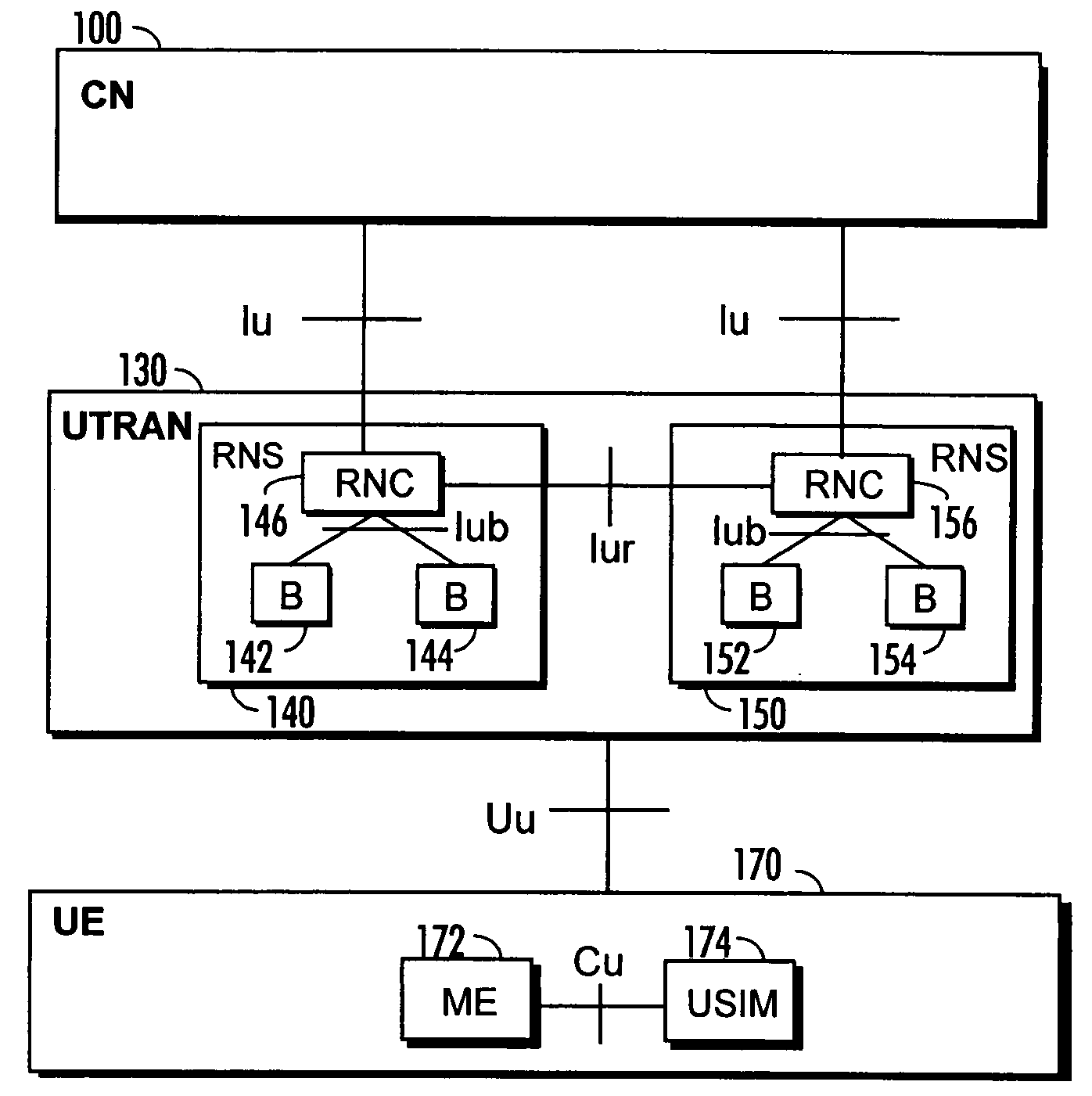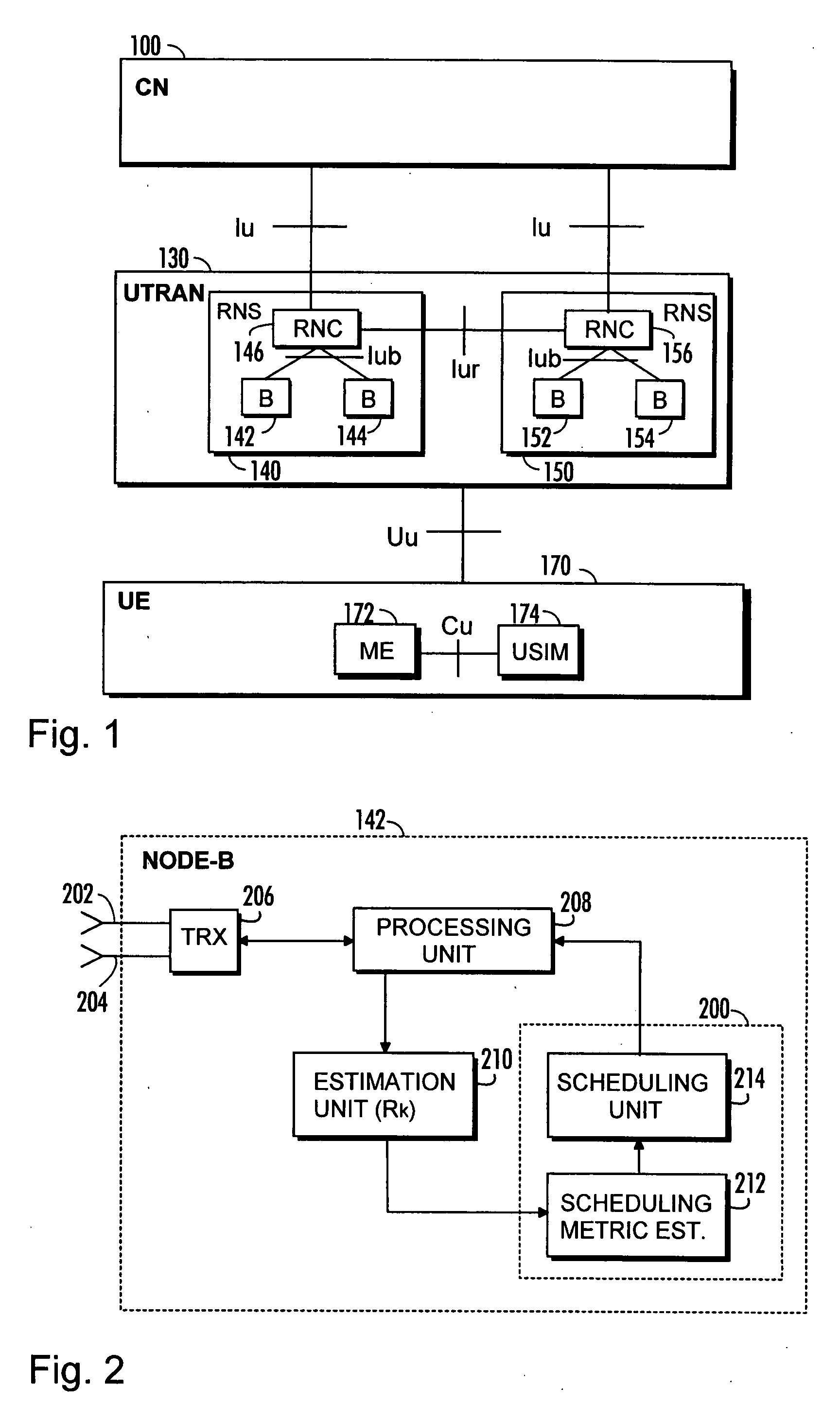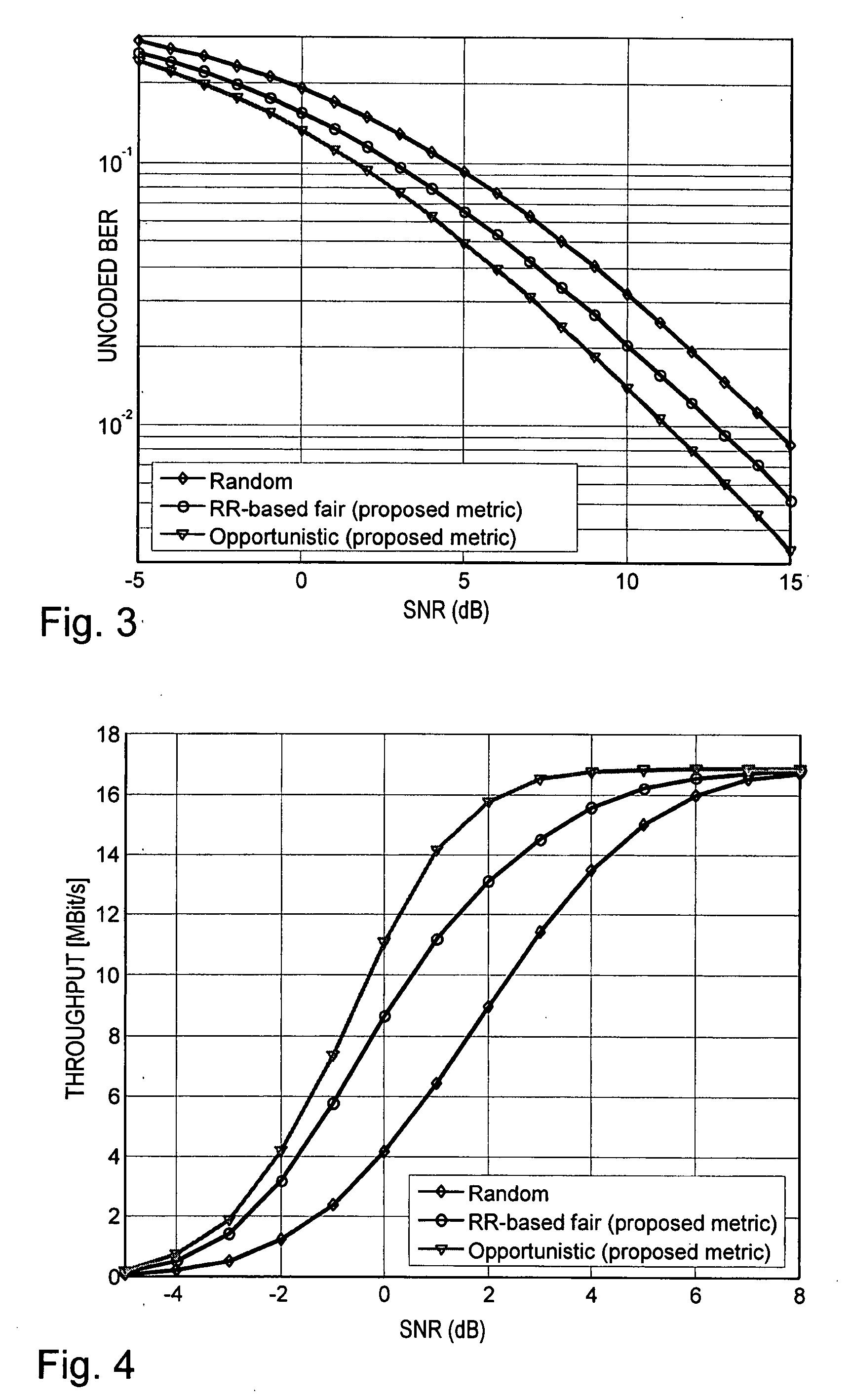Scheduling method, radio system, base station, and scheduling module
a radio system and module technology, applied in the field of scheduling methods, radio systems, base stations, scheduling modules, can solve the problems of not being able to serve all users in the same resource unit, the number of simultaneously decodable independent data streams is not large enough, and the difficulty of selecting a suitably small user subset for simultaneous transmission, etc., to achieve the effect of significantly reducing the amount of required channel sounding
- Summary
- Abstract
- Description
- Claims
- Application Information
AI Technical Summary
Benefits of technology
Problems solved by technology
Method used
Image
Examples
Embodiment Construction
[0021]FIG. 1 illustrates an example of a radio system to which embodiments of the invention can be applied. A radio system in FIG. 1, known at least as UTRAN [UMTS (Universal Mobile Telecommunications System) Terrestrial Radio Access Network]130, is taken as an example. The UTRAN belongs to the third generation and is implemented with WCDMA (Wideband Code Division Multiple Access) technology. The solution is not limited to a WCDMA radio interface but applications exist which are implemented with cdma2000, MC-CDMA (MultiCarrier Code Division Multiple Access) or OFDMA (Orthogonal Frequency Division Multiple Access) technologies without restricting the invention to the above-mentioned technologies.
[0022]FIG. 1 is a simplified block diagram showing the most important parts of a radio system and interfaces between them at a network-element level. The structure and functions of the network elements are not described in detail, because they are generally known.
[0023]The main parts of a rad...
PUM
 Login to View More
Login to View More Abstract
Description
Claims
Application Information
 Login to View More
Login to View More - R&D
- Intellectual Property
- Life Sciences
- Materials
- Tech Scout
- Unparalleled Data Quality
- Higher Quality Content
- 60% Fewer Hallucinations
Browse by: Latest US Patents, China's latest patents, Technical Efficacy Thesaurus, Application Domain, Technology Topic, Popular Technical Reports.
© 2025 PatSnap. All rights reserved.Legal|Privacy policy|Modern Slavery Act Transparency Statement|Sitemap|About US| Contact US: help@patsnap.com



